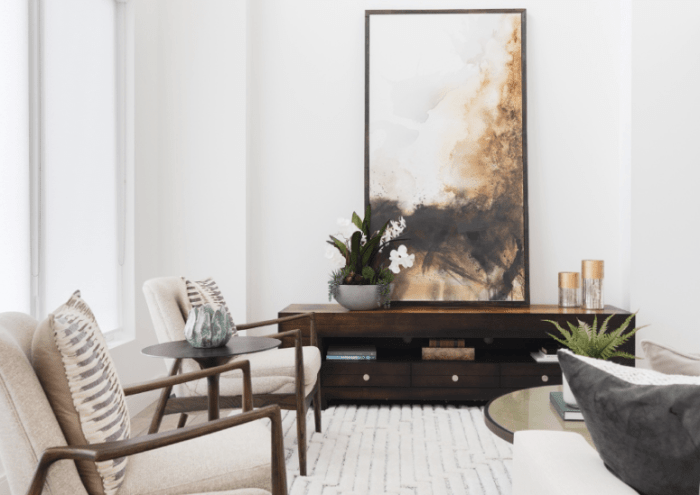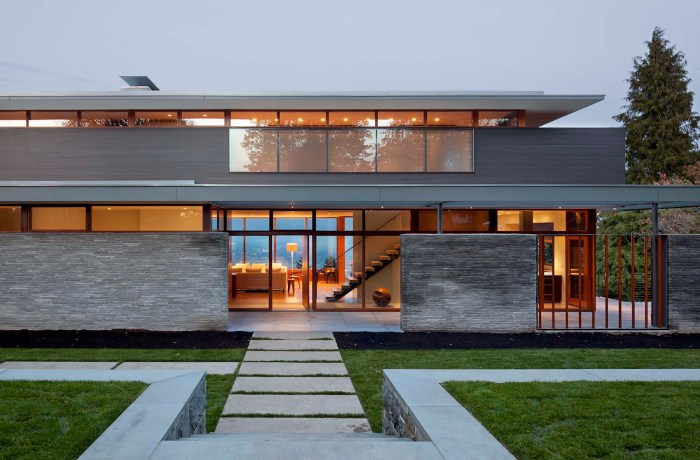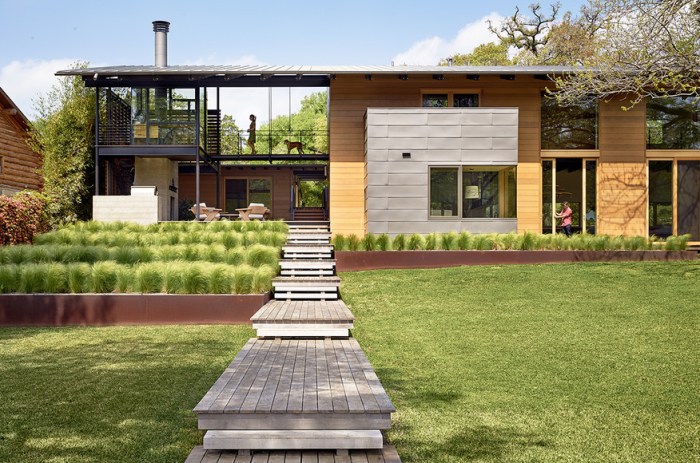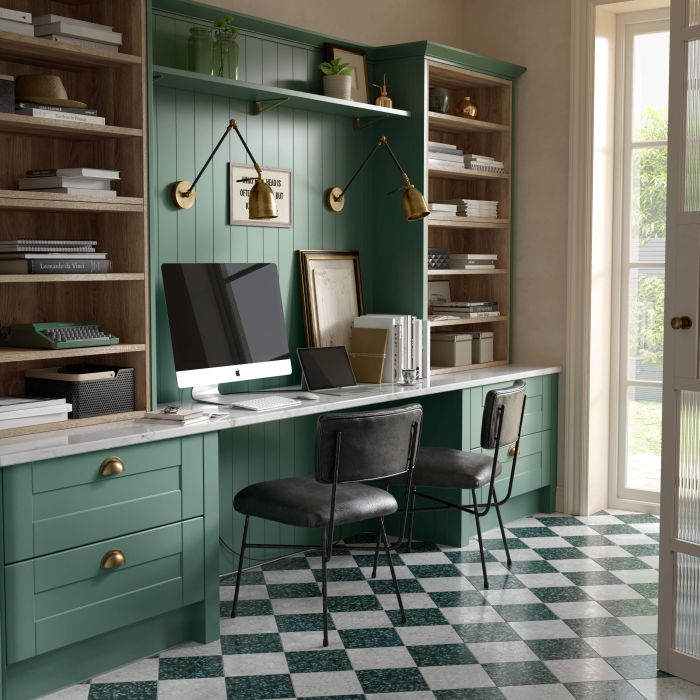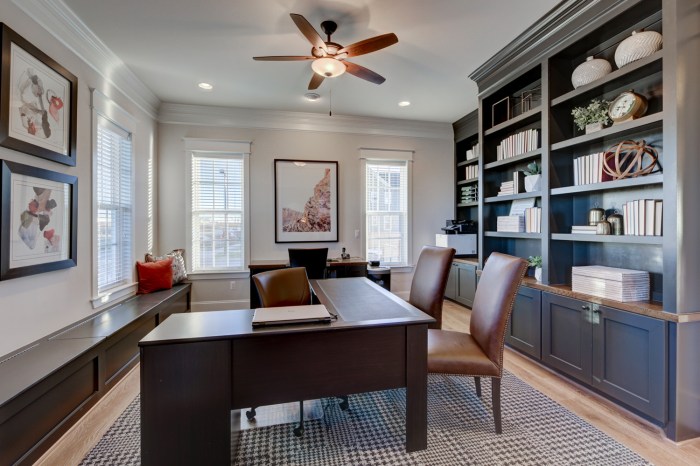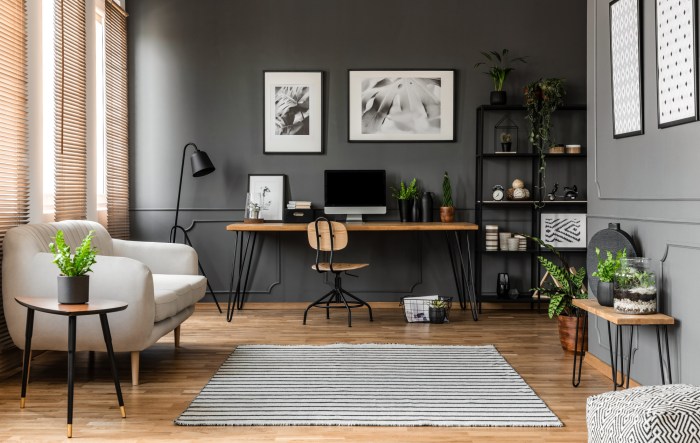How to Blend Different The art of blending disparate home styles—from the rustic charm of Farmhouse to the sleek minimalism of Modern—is a fascinating exploration of design principles. It’s not merely about combining elements; it’s about creating a harmonious whole where contrasting aesthetics complement each other, resulting in a space that reflects individual personality while adhering to the fundamental rules of visual balance and flow.
This journey into interior design will unravel the secrets of successful style fusion, drawing upon the scientific principles of visual perception and the established rules of interior design theory.
Understanding the underlying characteristics of different styles—their architectural features, color palettes, and materials—is crucial. We will delve into the specifics of five distinct styles, analyzing their unique attributes to identify potential points of synergy. This foundational knowledge will empower you to make informed decisions, fostering a space that is both aesthetically pleasing and functionally efficient. We will then move onto practical techniques and demonstrate how to seamlessly integrate elements from various styles, avoiding common pitfalls like visual clutter and stylistic dissonance.
Defining Home Styles
Understanding the nuances of different home styles is crucial for successful blending. Architectural styles are not merely aesthetic choices; they reflect historical trends, technological advancements, and cultural influences, each leaving a distinct imprint on the built environment. Analyzing these styles helps us appreciate the underlying principles that govern their design and allows for informed decisions when merging elements.
Five Distinct Home Styles
Five prominent home styles—Farmhouse, Modern, Victorian, Mid-Century Modern, and Traditional—exhibit diverse characteristics that reflect their origins and design philosophies. These differences are primarily expressed through their architectural features, color palettes, and the materials used in their construction. A comparative analysis reveals both their unique identities and potential points of convergence for harmonious blending.
Architectural Features, Color Palettes, and Common Materials
The Farmhouse style, originating from rural American life, emphasizes functionality and simplicity. Its architectural features often include a gable roof, wide porches, and large windows, reflecting a need for natural light and ventilation. The color palette typically leans towards muted tones of white, beige, and gray, with pops of color from natural elements like wood and greenery. Common materials include wood, stone, and metal, often left exposed to showcase their natural textures.In contrast, Modern architecture, emerging in the early 20th century, prioritizes clean lines, open spaces, and a minimalist aesthetic.
| Home Style | Architectural Style | Color Palette | Materials |
|---|---|---|---|
| Farmhouse | Gable roof, wide porches, large windows | Muted whites, beiges, grays; natural accents | Wood, stone, metal |
| Modern | Flat roof, large glass expanses, geometric forms | Neutral, monochromatic (whites, grays, blacks) | Concrete, steel, glass |
| Victorian | Steeply pitched roof, towers, decorative gables | Rich jewel tones, vibrant colors, contrasting accents | Wood, brick, stone (often intricately carved) |
| Mid-Century Modern | Low-pitched roof, open floor plan, natural materials | Muted greens, yellows, browns; pops of brighter colors | Wood, concrete, glass |
| Traditional | Symmetrical facade, formal proportions, columned porches | Neutral creams, whites, grays; darker accents | Brick, stone, wood |
Identifying Compatible Styles
Blending home styles successfully is a delicate dance between shared elements and harmonious contrasts. It’s about understanding the underlying principles of design that unify seemingly disparate aesthetics, creating a cohesive and visually appealing space. This involves identifying common threads—be it color palettes, material choices, or architectural details—and strategically utilizing them to bridge the gap between different styles. The key lies not in forcing a match, but in finding a balance that allows each style to contribute its unique character to the overall design.The successful integration of different home styles relies on recognizing underlying principles of design.
These principles, often rooted in psychology and visual perception, govern how we perceive and interpret spatial arrangements and aesthetic choices. For example, the principle of visual weight, which describes how different elements command attention, plays a crucial role. A bold, rustic fireplace might balance a more delicate, minimalist seating arrangement, preventing visual imbalance. Similarly, the principle of proportion dictates that the scale of different design elements should be harmonious.
A grand Victorian staircase, for example, might be successfully complemented by contemporary, streamlined furnishings, provided the scale of the furniture is appropriately considered in relation to the staircase’s grandeur.
Shared Elements as Unifying Factors
Identifying common ground between seemingly disparate styles often involves focusing on shared elements. For instance, a farmhouse style, characterized by its rustic charm and natural materials, can be seamlessly blended with a modern style, known for its clean lines and minimalist aesthetic, by utilizing a shared color palette of neutral tones, such as whites, grays, and beiges. The use of natural materials like wood and stone further bridges the gap, creating a sense of continuity between the two styles.
Similarly, the incorporation of similar textures, such as rough-hewn wood beams in a farmhouse setting and smooth, polished concrete floors in a modern setting, can create a visual harmony despite the distinct styles. The strategic use of these shared elements acts as a unifying force, preventing the space from feeling disjointed or chaotic.
Harmonious Contrasts: Creating Visual Interest
While shared elements provide a foundation for successful style blending, the introduction of harmonious contrasts adds depth and visual interest. The juxtaposition of a sleek, modern kitchen with traditional, ornate cabinetry can be incredibly effective, provided the contrast is carefully managed. For example, the use of a consistent color palette and material choices—such as stainless steel appliances in both areas—can help to unify the space despite the contrasting styles.
The key is to ensure that the contrasts complement each other, rather than clash. A well-executed contrast can highlight the unique qualities of each style, creating a more dynamic and engaging space. This principle is echoed in the field of color theory, where complementary colors—colors opposite each other on the color wheel—are known to create a vibrant and visually stimulating effect when used together.
Successful Style Blends: Case Studies
Consider a home that blends elements of mid-century modern and industrial styles. The clean lines and functional furniture of mid-century modern are complemented by the raw, exposed brick and metal accents of industrial design. The shared use of neutral colors, such as charcoal gray and warm browns, along with materials like wood and metal, creates a cohesive feel. The contrast between the smooth curves of mid-century furniture and the rough textures of exposed brick adds visual interest without disrupting the overall harmony.Another example is the successful fusion of rustic farmhouse and bohemian styles.
The natural materials and earthy tones common to both styles create a solid foundation. The farmhouse’s simplicity is balanced by the bohemian’s eclectic mix of patterns and textures, resulting in a space that is both inviting and visually stimulating. The use of woven textiles, vintage finds, and natural light further enhances the blend, creating a comfortable and uniquely styled living space.
In both examples, careful consideration of color palettes, material choices, and the principles of visual weight and proportion are key to the success of the blend.
Blending Techniques
Harmoniously merging disparate home styles requires a nuanced understanding of design principles and a strategic approach. The key lies not in simply combining elements, but in thoughtfully integrating them to create a cohesive and visually appealing space. This process involves a careful selection of compatible styles, a strategic implementation of transitional elements, and an appreciation for the psychological impact of design choices on the overall atmosphere.
Success hinges on understanding the underlying principles of each style and employing techniques that bridge the gap between them, rather than forcing an unnatural juxtaposition.Successfully blending two home styles is akin to conducting a carefully orchestrated symphony. Each style represents a distinct instrument, and the designer acts as the conductor, ensuring each instrument plays its part while contributing to a harmonious whole.
This requires a detailed plan, a methodical approach, and a keen eye for detail.
A Step-by-Step Guide to Style Integration
This guide Artikels a practical approach to seamlessly integrating two distinct home styles. The process involves a phased approach, starting with a clear understanding of the desired outcome and progressing through the selection and placement of key elements.
- Style Selection and Analysis: Begin by identifying the two primary styles you wish to blend. Analyze their core characteristics—color palettes, materials, furniture silhouettes, and decorative motifs. For example, consider blending the clean lines and minimalist aesthetic of Mid-Century Modern with the warm, rustic charm of Farmhouse style. Understanding the inherent contrasts and similarities is crucial.
- Dominant Style Determination: Choose one style to serve as the dominant theme, forming the foundation of the space. In our Mid-Century Modern and Farmhouse example, let’s say Mid-Century Modern is the dominant style. This ensures a cohesive base upon which the secondary style can be subtly layered.
Incorporating Elements from One Style into Another
The successful integration of elements from one style into a space predominantly designed in another hinges on thoughtful selection and placement. Consider the following:Imagine a living room primarily designed in a sleek, contemporary style. To introduce elements of a bohemian style, one might incorporate a large, patterned rug with rich textures, plush cushions in vibrant colors and eclectic patterns, and macrame wall hangings.
These elements add a touch of bohemian flair without disrupting the overall contemporary feel. The key is to maintain a sense of balance; avoid overwhelming the space with too many elements from the secondary style.
Common Transitional Elements
Transitional elements act as bridges between disparate styles, creating a sense of harmony and cohesion.
- Rugs: Rugs are powerful tools for blending styles. A rug with a geometric pattern (modern) and natural fibers (rustic) can seamlessly unify contrasting aesthetics.
- Lighting: Lighting fixtures can subtly introduce elements of a secondary style. A modern pendant light with a natural wood finish can bridge the gap between contemporary and rustic styles.
- Textiles: Throw pillows, blankets, and curtains can incorporate textures and patterns from a secondary style without being overly dominant.
- Artwork: Artwork can act as a visual connector, incorporating elements of both styles. A modern abstract painting with a rustic wooden frame can be a subtle yet effective bridge.
- Accessories: Carefully selected accessories, such as vases, candles, and decorative objects, can add touches of a secondary style without disrupting the overall harmony.
Visual Examples and Illustrations
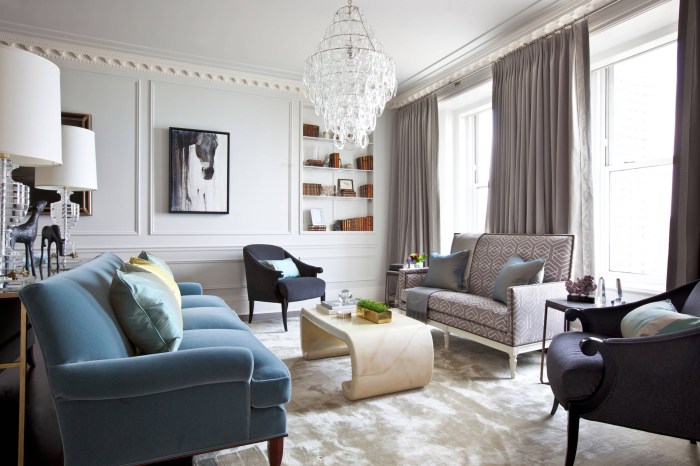
The successful blending of disparate home styles hinges on a careful consideration of color palettes, texture interplay, and the strategic placement of furniture. Understanding the underlying principles of each style allows for a harmonious fusion, creating a space that is both aesthetically pleasing and functionally effective. The following examples illustrate how seemingly contrasting styles can be seamlessly integrated to create unique and inviting living spaces.
A Farmhouse-Modern Living Room
This living room exemplifies the successful marriage of rustic farmhouse charm and sleek modern minimalism. The foundational element is a neutral color palette—think creamy whites, soft greys, and muted earth tones—which provides a calming backdrop for both styles. The walls are painted a soft, warm white, allowing the textures of the room to take center stage. A large, plush, modern sectional sofa in a light grey linen provides ample seating.
Its clean lines and simple silhouette contrast beautifully with a reclaimed wood coffee table, its rough-hewn surface showcasing the natural beauty of the wood. A vintage farmhouse-style rug, woven with natural fibers like jute or wool, adds warmth and texture underfoot, grounding the space and adding a touch of rustic charm. Metal accents, such as a sleek black floor lamp and a geometrically-shaped side table, inject a touch of modern industrial style.
The overall effect is a space that feels both relaxed and sophisticated, showcasing the inherent compatibility of farmhouse and modern aesthetics. The careful balance of rustic and refined elements creates a space that is both inviting and stylish.
A Traditional-Mid-Century Modern Kitchen
This kitchen seamlessly blends the warmth of traditional design with the clean lines of mid-century modern style. The cabinetry is a key element in this fusion. Lower cabinets are crafted from rich, dark wood, echoing the classic traditional aesthetic. Their solid construction and detailed molding create a sense of permanence and quality. However, the upper cabinets are sleek and frameless, characterized by the simple, clean lines typical of mid-century modern design.
These are painted a crisp white, creating a visual contrast that prevents the space from feeling overly heavy. The countertops are a beautiful quartz surface in a light grey tone, offering both durability and a contemporary feel. The backsplash features simple, white subway tiles, a timeless element that complements both styles. Appliances are chosen for their functionality and clean aesthetic, avoiding overtly ornate details.
The overall effect is a kitchen that is both timeless and modern, balancing traditional warmth with mid-century sleekness. The careful selection of materials and the strategic use of color create a visually stunning and highly functional space.
A Victorian-Contemporary Bedroom
This bedroom successfully integrates the ornate details of Victorian design with the minimalist elegance of contemporary style. The bed frame serves as a focal point, showcasing this fusion. It’s a meticulously crafted piece with a headboard featuring intricate carvings reminiscent of Victorian aesthetics, but the frame itself is kept relatively simple and uncluttered, preventing the room from feeling overly fussy.
The textiles are where the styles truly intertwine. Rich velvet drapes in a deep jewel tone, a nod to Victorian opulence, hang from a simple, modern curtain rod. The bedding is a combination of crisp white linen sheets and a textured throw blanket in a neutral color, providing a comfortable and contemporary feel. Lighting is a crucial element in this design.
A stunning Victorian-style chandelier hangs above the bed, providing a dramatic focal point. However, this is complemented by strategically placed modern LED task lighting, offering functional illumination without detracting from the overall aesthetic. The overall design is a testament to the power of thoughtful juxtaposition, creating a space that is both luxurious and livable. The blend of historical richness and contemporary simplicity results in a bedroom that is both visually striking and incredibly comfortable.
Practical Considerations and Challenges
Blending disparate home styles, while aesthetically rewarding, presents practical challenges that require careful planning and execution. Success hinges on a deep understanding of the inherent properties of each style and a strategic approach to their integration, avoiding visual discord while maintaining a unified aesthetic. Ignoring these considerations can lead to a home that feels chaotic and lacks a clear design identity.The primary hurdle lies in the potential for visual conflict.
Different styles often employ contrasting color palettes, textures, and architectural details. For instance, the clean lines and minimalist palette of mid-century modern might clash jarringly with the ornate detailing and rich colors of Victorian design. This conflict can manifest as a sense of disunity, where individual elements compete for attention rather than complementing each other. A poorly executed blend risks creating a space that feels less like a cohesive home and more like a collection of unrelated design fragments.
Visual Harmony and Cohesion
Maintaining a cohesive aesthetic requires a thoughtful selection of shared elements across different styles. This could involve using a consistent color palette, even if the shades vary in intensity or saturation. For example, a neutral base of grays and creams can underpin both a rustic farmhouse style and a contemporary minimalist aesthetic. Repeating a specific architectural detail, such as arched doorways or exposed beams, can also unify disparate spaces.
The key is to identify visual threads that connect the different styles, creating a sense of visual continuity and preventing the home from feeling disjointed. Consider the use of a unifying material, such as natural wood, throughout the house, to subtly tie together diverse elements. A unifying material can be used in flooring, furniture, or accent pieces, acting as a visual anchor.
Managing Spatial Conflicts
Different styles often have inherent spatial requirements. For instance, a traditional style might necessitate larger, more formal rooms, while a contemporary style might favor open-plan living. Attempting to force these conflicting spatial needs into a single space can lead to a cramped or awkwardly configured layout. The solution involves careful spatial planning, perhaps incorporating transitional zones between different style areas.
A hallway with a distinct style could act as a buffer between a formal living room and a modern kitchen. This approach allows for a gradual shift in style, preventing jarring transitions and maintaining a sense of flow.
Avoiding Common Mistakes
One frequent mistake is an overabundance of decorative elements. Mixing styles doesn’t mean including every element from each style. Instead, it’s about carefully selecting representative pieces that complement each other. Overdoing it can create visual clutter, obscuring the individual beauty of each style and overwhelming the space. A carefully curated selection of key pieces, rather than a chaotic accumulation, is crucial.
Another common error is a lack of scale and proportion. Mixing styles often involves combining furniture and decorative items of different sizes and shapes. Failing to consider scale can result in a visually unbalanced space, where certain elements appear dwarfed or overwhelming. Careful attention to the proportions of furniture and decorative objects is vital for creating a harmonious environment.
Resources and Further Exploration
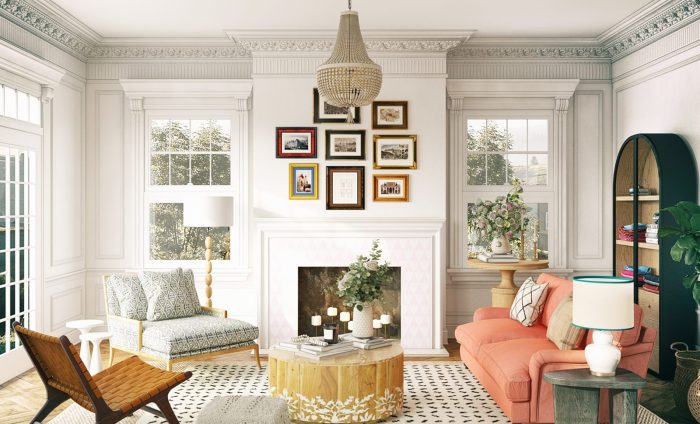
Successfully blending disparate home styles requires a deep dive into design principles and a curated collection of inspirational resources. Understanding the nuances of various styles and accessing practical guidance is key to achieving a cohesive and aesthetically pleasing result. The following resources offer pathways to expanding your knowledge and refining your design vision.
Accessing reliable information and inspiration is crucial for successfully navigating the complexities of style blending in interior design. This section provides a curated selection of online and offline resources to support your journey.
Reputable Interior Design Websites and Magazines
Numerous online and print resources offer valuable guidance on interior design principles and style blending. These platforms provide diverse perspectives, expert advice, and visual inspiration to inform your design choices. Careful selection of resources is paramount, ensuring credibility and relevance to your project.
- Architectural Digest: Known for its high-quality photography and articles featuring renowned designers and their projects, Architectural Digest showcases a wide range of styles and provides insights into design trends and techniques.
- Elle Decor: This magazine offers a sophisticated blend of high-end design and practical advice, covering various styles and providing inspiration for both modern and traditional aesthetics.
- House Beautiful: Focusing on a broader range of budgets and styles, House Beautiful provides accessible tips and design ideas, making it a valuable resource for homeowners of all levels of experience.
- Dwell: This magazine focuses on modern and contemporary design, showcasing innovative architectural designs and interior spaces. It’s a great resource for understanding clean lines and minimalist aesthetics.
- Remodelista: This website offers a curated collection of design ideas and products, emphasizing sustainable and thoughtful design choices. It’s a valuable resource for those seeking environmentally conscious design solutions.
Books on Interior Design Principles and Style Guides
Books provide in-depth knowledge and a structured approach to understanding interior design principles. They offer a deeper exploration of style guides than many online resources, allowing for a more comprehensive grasp of the subject matter. Choosing books written by experienced designers or design historians ensures high-quality information.
- “Interior Design: A Complete Guide” by John Pile: This comprehensive guide provides a thorough overview of interior design principles, including spatial planning, color theory, and furniture selection.
- “The Elements of Interior Design” by Michael J. DeAngelis: This book delves into the fundamental elements of design, such as line, form, color, and texture, providing a strong foundation for understanding design composition.
- “Style: Fifty Interior Designers on Their Process” by Sarah M. Dorsey: This book showcases the design approaches of various interior designers, highlighting their creative processes and the unique styles they employ. It provides diverse perspectives and inspirations.
Finding Inspiration Through Online Image Searches and Social Media
Online platforms offer vast visual resources for inspiration, enabling the discovery of diverse design styles and creative combinations. However, careful curation and critical analysis of the discovered images are essential to avoid overwhelming oneself and to ensure the chosen styles align with personal preferences and the overall project goals.
Utilizing advanced search techniques, such as specifying style combinations (e.g., “mid-century modern and farmhouse kitchen”), allows for targeted image searches, reducing the time spent sifting through irrelevant results. Pinterest and Instagram are particularly valuable platforms for visual inspiration, allowing for the creation of mood boards and the organization of ideas.
For example, searching “bohemian farmhouse living room” on Pinterest might reveal images combining rustic farmhouse elements like exposed beams and reclaimed wood with bohemian textures like macrame and woven rugs. This visual exploration helps solidify design choices and fosters a clear understanding of the desired aesthetic blend.
Successfully blending home styles is a testament to the power of thoughtful design and a deep understanding of aesthetic principles. By carefully selecting compatible elements, employing strategic blending techniques, and paying close attention to detail, you can create a unique and captivating living space. Remember, the key lies not in simply combining styles, but in crafting a cohesive narrative that reflects your personal style and enhances the functionality and beauty of your home.
The journey might present challenges, but the reward – a truly personalized and harmonious living environment – is well worth the effort. Embrace the creative process, and your home will reflect a unique and beautiful blend of your tastes.
FAQ Insights
What if I love multiple styles and can’t choose just two to blend?
Focus on a dominant style and use elements from others as accents. Too many competing styles can create visual chaos. Prioritize cohesion.
How can I avoid making my space feel too cluttered when blending styles?
Maintain a consistent color palette, use negative space effectively, and choose furniture with clean lines to prevent visual overload. Edit ruthlessly.
What are some inexpensive ways to blend styles?
Textiles (rugs, throw pillows, curtains) and lighting are cost-effective ways to introduce elements of a different style. Repainting walls is another budget-friendly option.
How do I know if two styles are truly compatible?
Look for shared elements: similar color palettes, textures, or architectural details. Even seemingly disparate styles can share underlying principles of form and function.
Where can I find inspiration for blending styles beyond online resources?
Visit museums, art galleries, and historical homes to observe how different styles have been combined throughout history. Pay attention to how they utilize color, texture and form.
Read More: Kanavino.org

